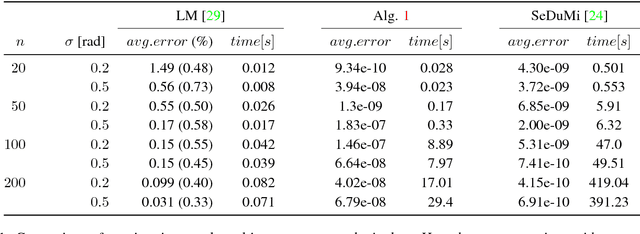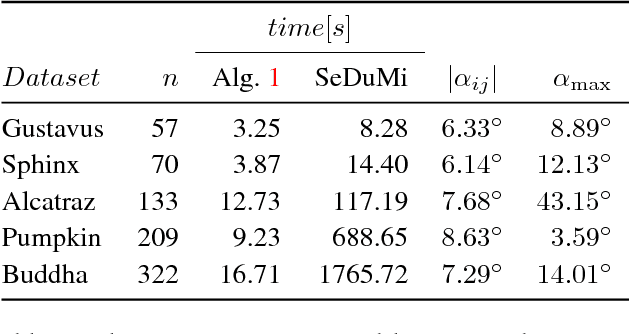Rotation Averaging and Strong Duality
Paper and Code
Nov 29, 2017



In this paper we explore the role of duality principles within the problem of rotation averaging, a fundamental task in a wide range of computer vision applications. In its conventional form, rotation averaging is stated as a minimization over multiple rotation constraints. As these constraints are non-convex, this problem is generally considered challenging to solve globally. We show how to circumvent this difficulty through the use of Lagrangian duality. While such an approach is well-known it is normally not guaranteed to provide a tight relaxation. Based on spectral graph theory, we analytically prove that in many cases there is no duality gap unless the noise levels are severe. This allows us to obtain certifiably global solutions to a class of important non-convex problems in polynomial time. We also propose an efficient, scalable algorithm that out-performs general purpose numerical solvers and is able to handle the large problem instances commonly occurring in structure from motion settings. The potential of this proposed method is demonstrated on a number of different problems, consisting of both synthetic and real-world data.
 Add to Chrome
Add to Chrome Add to Firefox
Add to Firefox Add to Edge
Add to Edge